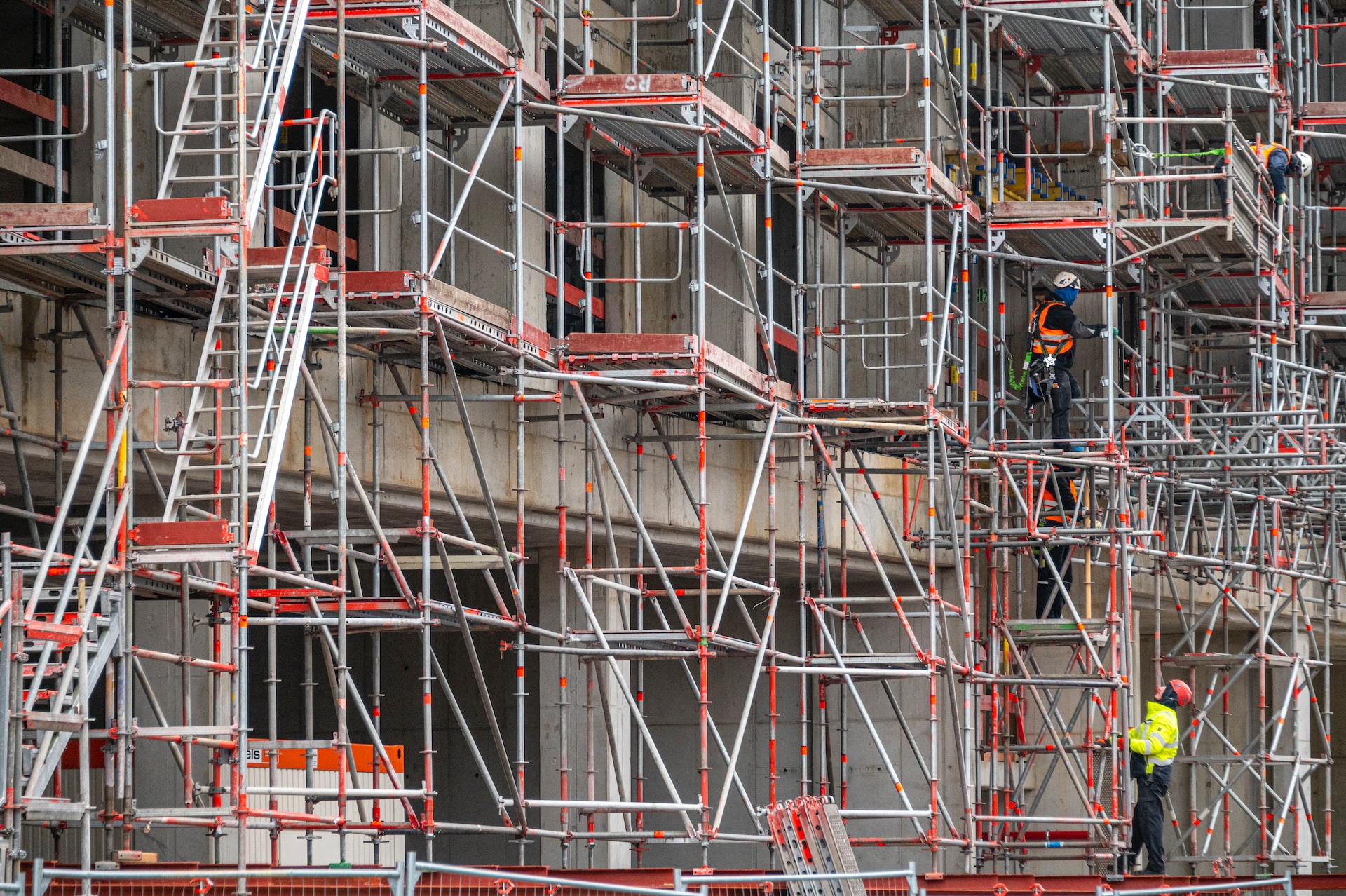Affordable Domestic Scaffolding for Every Home Renovation Project
Wiki Article
Checking Out the Different Kinds of Scaffolding Utilized in Construction Tasks
The building and construction market counts greatly on different types of scaffolding to fulfill certain project needs, each offering distinct advantages and applications. Typical structure scaffolding supplies a tough structure for basic tasks, while put on hold scaffolding is vital for deal with skyscraper structures. Various other choices, such as system and rolling scaffolding, satisfy efficiency and wheelchair, specifically. The cantilever alternative proves invaluable in metropolitan environments where space is constricted. Understanding the nuances of these scaffolding kinds is vital for enhancing safety and security and performance on building websites, motivating a closer assessment of their one-of-a-kind attributes and applications.
Typical Frame Scaffolding
Standard structure scaffolding is one of the most commonly used approaches in the construction market as a result of its robustness and versatility. This system is composed of upright and horizontal frameworks that are set up to create a stable platform for workers and materials. The primary parts include upright blog posts, horizontal ledgers, and angled braces, which with each other offer a strong framework that can sustain substantial loads.Among the vital advantages of typical framework scaffolding is its flexibility to different construction tasks, ranging from domestic buildings to huge commercial frameworks. The modular design enables easy assembly and disassembly, making it efficient for both long-lasting and short-term projects. In addition, the system can be tailored in elevation and size, accommodating various structure designs and website problems.
Safety and security is critical in scaffolding applications, and traditional structure systems are outfitted with guardrails and toe boards to avoid falls and make certain worker defense. Furthermore, routine examinations and adherence to safety guidelines are crucial in preserving the honesty of the scaffold. On the whole, conventional structure scaffolding remains a basic choice in the building and construction market, supplying a trustworthy platform for labor and boosting general task efficiency

Suspended Scaffolding
Suspended scaffolding offers a special service for building jobs that call for accessibility to elevated surfaces, especially in circumstances where standard frame scaffolding might be unwise. This kind of scaffolding is usually suspended from the roof covering or top levels of a structure, making use of a system of pulleys, systems, and ropes to produce a working area that can be adapted to different elevations.One of the key advantages of suspended scaffolding is its adaptability. It can be quickly rearranged or lowered to suit modifications in construction requirements, making it ideal for jobs such as home window installation, frontage job, and upkeep on high-rise structures. Additionally, the minimal impact of put on hold scaffolding allows for better use ground room in urban atmospheres, where room is usually restricted.
Security is an important factor to consider in making use of put on hold scaffolding. Proper rigging and securing systems must be employed to ensure stability and stop crashes. Operators must also be learnt the secure use of this devices. Overall, put on hold scaffolding gives a effective and reliable service for accessing hard-to-reach locations in numerous construction situations, improving both performance and safety and security on site.
System Scaffolding
System scaffolding, usually considered a modern-day service in the scaffolding market, includes pre-engineered elements that can be rapidly set up and adapted for different building jobs. Scaffolding. This kind of scaffolding is characterized by its modular design, which enables Scaffolder Surrey adaptability and performance on job websites, suiting various heights and structural requirementsCommonly made from high-strength steel or aluminum, system scaffolding supplies improved resilience and security. The elements include vertical messages, horizontal journals, and angled dental braces, which adjoin securely, guaranteeing a robust framework. The style often includes standardized installations, streamlining assembly and disassembly procedures, thus lowering labor time and costs.

Rolling Scaffolding
Rolling scaffolding is a versatile alternative to conventional fixed scaffolding, designed for wheelchair and ease of use on building websites. This kind of scaffolding consists of a system sustained by frames with wheels, allowing employees to conveniently relocate it as needed. The movement attribute considerably boosts productivity, as it reduces downtime connected with disassembling and putting together dealt with scaffolding.Normally created from light-weight products such as aluminum or steel, rolling scaffolding offers a durable yet mobile solution for projects calling for frequent repositioning - Scaffolding. It is particularly advantageous in jobs such as paint, drywall installment, and electric work, where access to various heights and locations is necessary
Safety is critical in rolling scaffolding style, with attributes such as locking wheels to avoid unintentional activity when in operation, and guardrails to shield workers from drops. Furthermore, many versions are adjustable in elevation, accommodating various job requirements.
Cantilever Scaffolding

The style of cantilever scaffolding generally entails utilizing braces or arms anchored to a building or structure, enabling the system to prolong outside safely. Safety and security is vital; therefore, these scaffolds should be engineered to withstand ecological problems and different tons. Regular evaluation and maintenance are essential to guarantee structural integrity and employee safety and security.
Cantilever scaffolding is preferred for its versatility and efficient use of space, making it a preferred option in city settings where space constraints are usual. It facilitates less complicated access to high altitudes, ultimately adding to the total efficiency of construction tasks. Just like all scaffolding kinds, appropriate training and adherence to safety criteria are crucial for employees using cantilever scaffolding.
Verdict
In final thought, the diverse kinds of scaffolding used in building jobs each offer distinct objectives tailored to details website needs. Traditional frame scaffolding gives security, while put on hold scaffolding offers flexibility for elevated tasks. System scaffolding promotes fast setting up, and rolling scaffolding boosts mobility for varying workplace. Cantilever scaffolding successfully addresses obstacles in urban settings. Comprehending these scaffolding kinds is crucial for optimizing security and efficiency in building and construction, inevitably adding to the effective conclusion of jobs.Standard framework scaffolding provides a tough structure for general jobs, while put on hold scaffolding is necessary for work on high-rise frameworks.Rolling scaffolding is a versatile alternative to standard fixed scaffolding, designed for flexibility and convenience of use on construction websites. As with all scaffolding types, correct training and adherence to safety and security criteria are important for workers making use of cantilever scaffolding.
Conventional frame scaffolding supplies stability, while put on hold scaffolding offers adaptability for elevated jobs. System scaffolding facilitates fast assembly, and rolling scaffolding improves movement for differing work atmospheres.
Report this wiki page